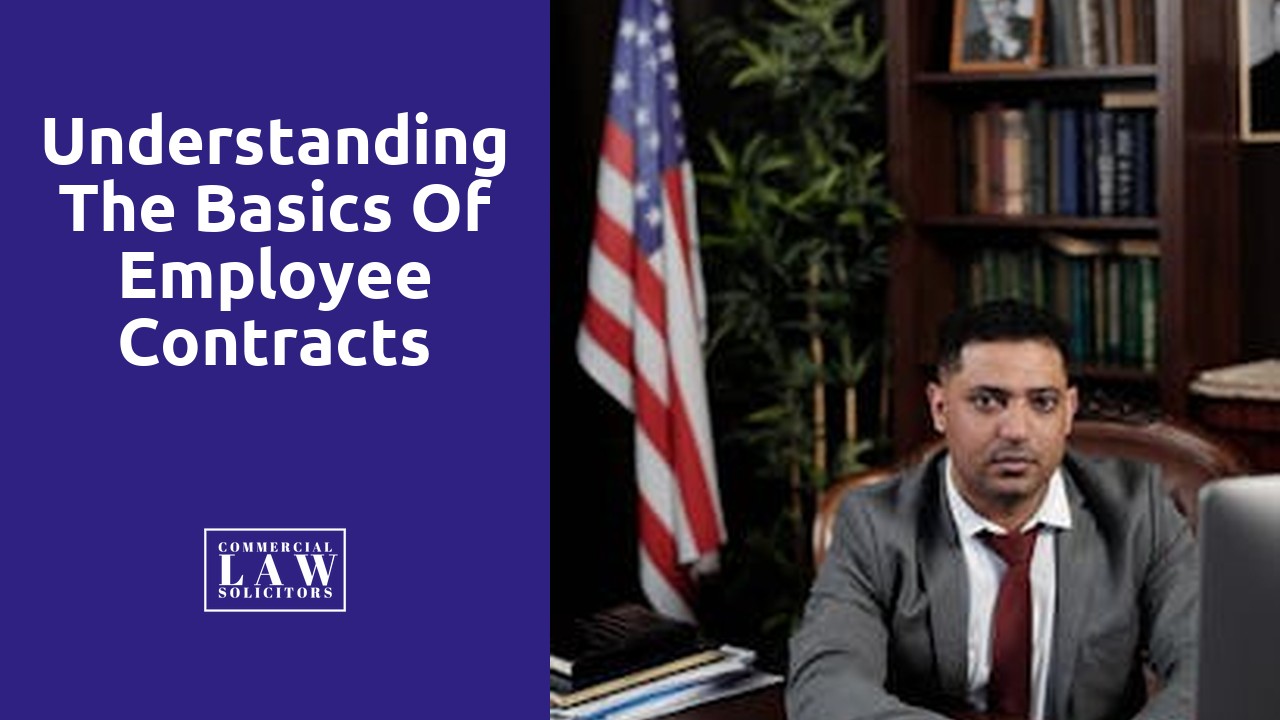Understanding the Basics of Employee Contracts

Employee Contracts: A Comprehensive Guide
Employee contracts are an essential component of any business relationship. They provide a foundation for both the employer and the employee, ensuring that both parties are aware of their rights, responsibilities, and expectations. A well-drafted employment contract not only protects the interests of the employer but also safeguards the rights of the employee.
When creating an employee contract, it is crucial to include key elements that will help establish a secure and transparent working relationship. This includes clearly defining the job title, position, and duties of the employee, as well as outlining the terms of employment such as the duration of the contract, working hours, and remuneration. Additionally, it is important to include provisions regarding confidentiality, intellectual property rights, and any restrictive covenants to protect the company's interests. By covering these essential elements, the employee contract can serve as a valuable resource for both parties, minimizing potential disputes and ensuring a harmonious working environment.
Key Elements of Employment Agreements
Key Elements of Employment Agreements
Employment agreements form the foundation of the relationship between employers and employees. They outline the terms and conditions that govern this crucial professional bond. While the specific contents of an employment agreement may vary depending on the industry, company size, and individual circumstances, certain key elements are commonly found in most agreements.
One essential element of an employment agreement is the job description. This section clearly outlines the employee's role, responsibilities, and expectations. It provides a roadmap for both parties, ensuring that there is clarity about the job's scope and the tasks the employee is expected to perform. A comprehensive job description helps set the stage for a successful working relationship and minimizes the potential for conflicts arising from miscommunication or misunderstandings.
Navigating the World of Work Contracts
Navigating the world of work contracts can be a daunting task for both employers and employees. With numerous legal terms and complex clauses, it is crucial to approach employment agreements with care and attention to detail. Understanding the key elements of these contracts is essential to avoid any potential misunderstandings or disputes in the future.
One important aspect to consider when navigating work contracts is the inclusion of clear and concise terms and conditions. This includes specifying the job responsibilities, working hours, compensation, and any additional benefits or perks. By ensuring that all parties have a clear understanding of their rights and obligations, the chances of any future conflicts can be significantly reduced. Furthermore, seeking legal advice or consulting an expert in employment law can provide valuable insights and guidance in deciphering the intricacies of these contracts. With their expertise, they can help ensure that all aspects of the agreement are fair and in compliance with relevant laws and regulations.
The Ins and Outs of Employee Agreements
Employee agreements, also known as employment contracts, are the foundation of the employer-employee relationship. These written agreements outline the terms and conditions of employment, ensuring that both parties are aligned and protected. While the specifics of employee agreements may vary depending on the industry and position, there are key elements that should be included to ensure a comprehensive and mutually beneficial agreement.
First and foremost, a clear and concise job description should be outlined in the employee agreement. This includes the role, responsibilities, and expectations of the employee. By clearly defining the scope of work, both the employer and the employee have a mutual understanding of the job requirements. Additionally, this section should address any necessary qualifications or certifications that are necessary for the position. This ensures that the employee possesses the necessary skills and qualifications to perform the job effectively.
Unraveling the Mysteries of Employment Contracts
Unraveling the mysteries of employment contracts can be a daunting task for both employers and employees. These legal documents outline the terms and conditions of an individual's employment, addressing key elements such as working hours, compensation, benefits, and job responsibilities. While the language used in employment contracts can sometimes appear complex and overwhelming, understanding the basics is essential for both parties involved.
One important aspect to consider when deciphering an employment contract is the inclusion of any restrictive covenants. These clauses, such as non-compete agreements and non-disclosure agreements, can significantly impact an employee's future career prospects. It is crucial for individuals to carefully review such provisions to ensure they understand the limitations and potential consequences they may face in the event of termination or resigning from the position. Additionally, employers must ensure that these clauses are reasonable and necessary for the protection of their legitimate business interests.
Mastering the Art of Employment Agreements
When it comes to employee agreements, mastering the art requires a deep understanding of the key elements that make up these contracts. It is crucial for employers to clearly outline the terms and conditions of employment to ensure both parties are on the same page. From the commencement date and duration of the contract to the specific job responsibilities and compensation details, every aspect should be clearly addressed and agreed upon.
Additionally, a well-crafted employee agreement should include provisions related to confidentiality, non-compete clauses, and intellectual property rights. These elements protect the employer's interests and prevent any potential conflicts down the line. Furthermore, navigating the legal intricacies of employment agreements requires expertise in labor laws and regulations. It is essential to seek professional advice and consult legal experts to ensure compliance and avoid any legal disputes.
Related Links
Essential Elements to Include in an Employee ContractNavigating Legal Issues in Employee Contract Disputes
Importance of Reviewing and Updating Employee Contracts
Addressing Breach of Employee Contracts